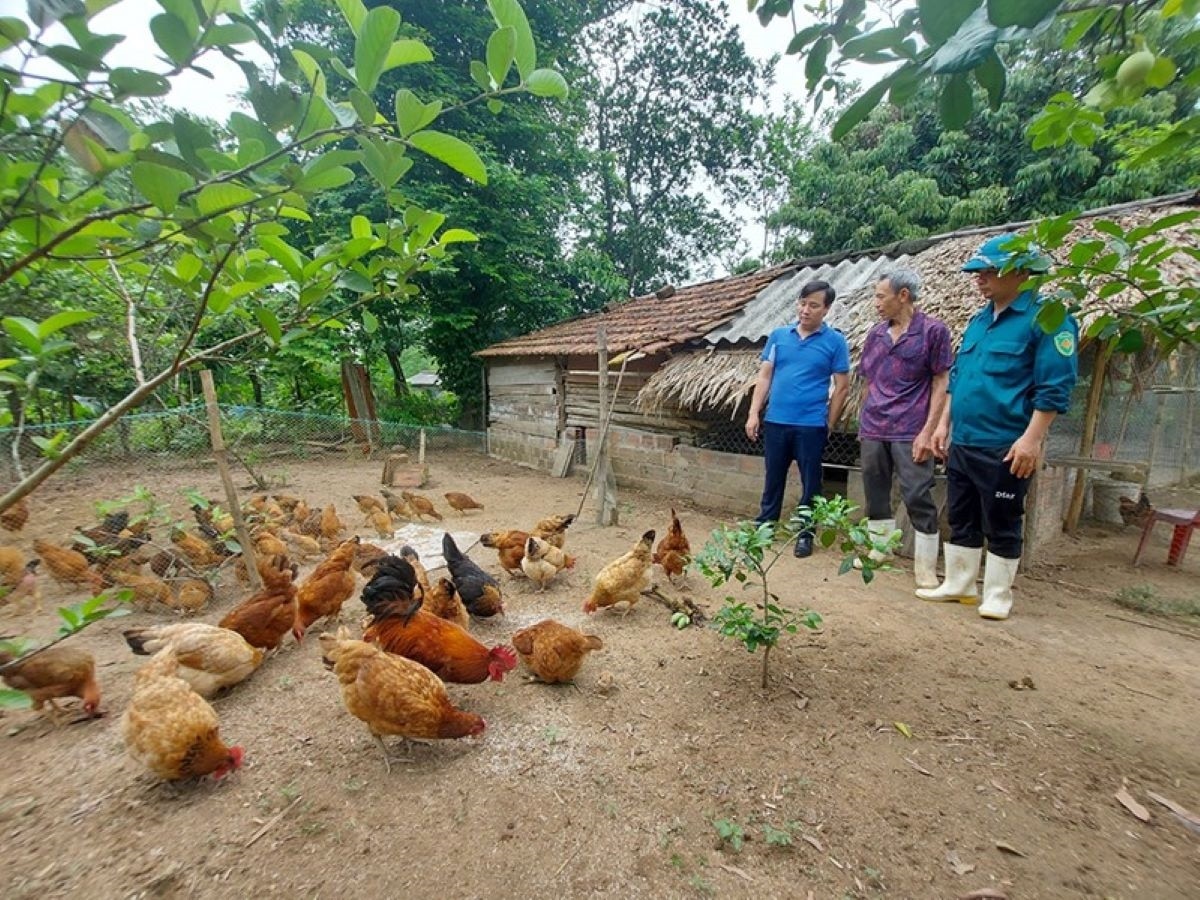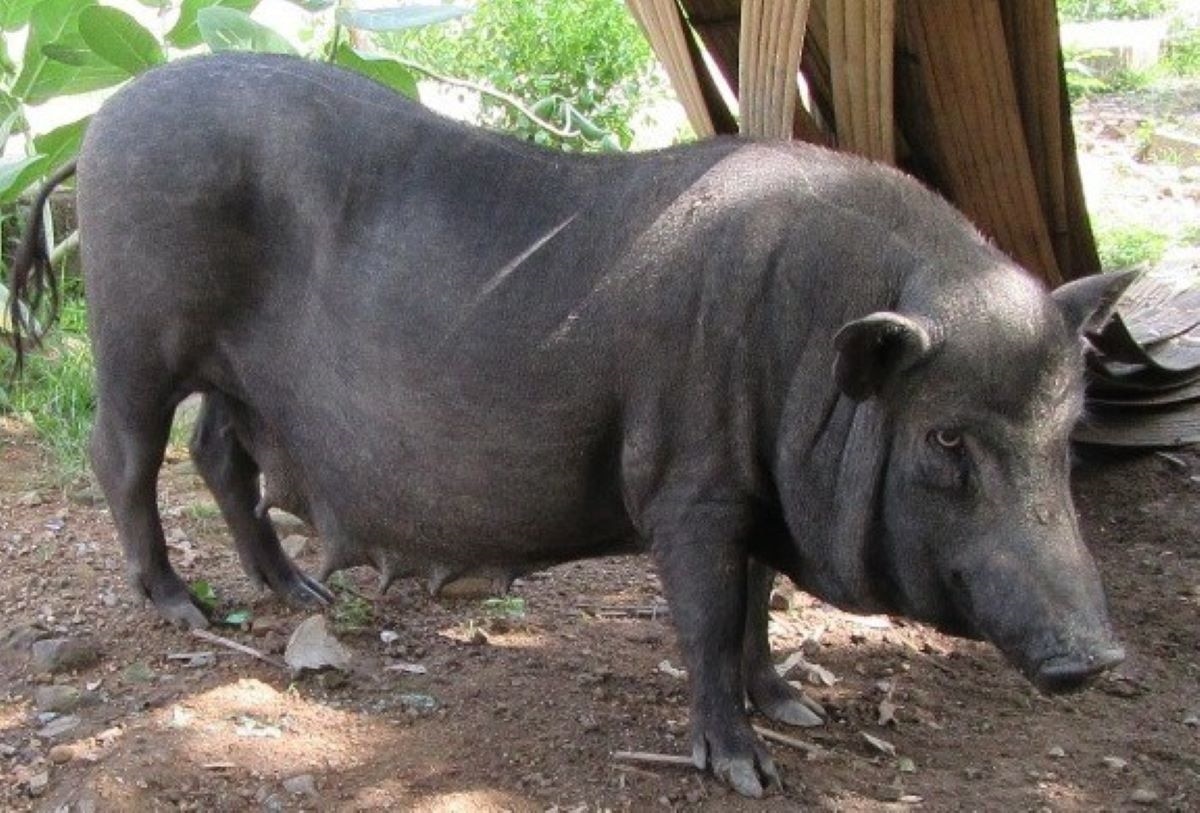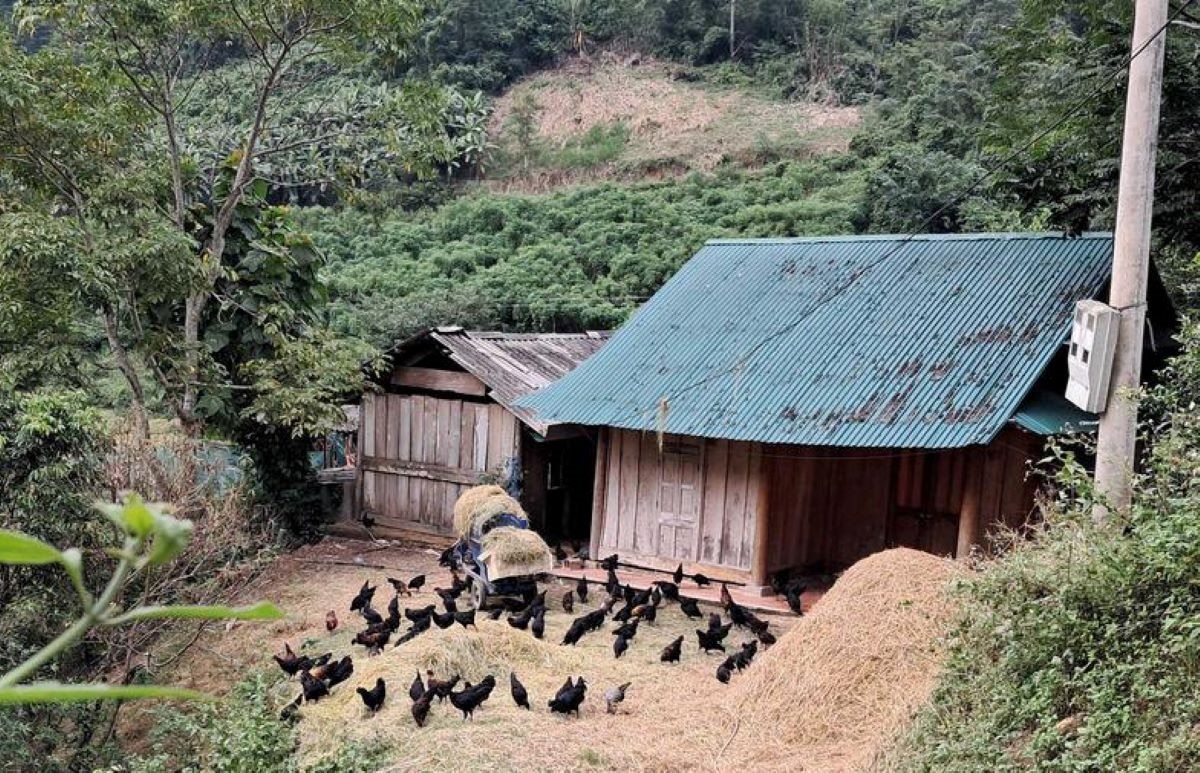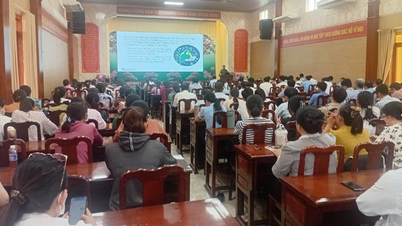Gene sources and numbers are decreasing.
The North Central region in general and the ethnic minority areas in the provinces in the region in particular have many high-quality native livestock breeds. For example, Lac Son chicken (Quang Binh), black chicken of the Mong people ( Nghe An ), Khua pig (Quang Binh) ... are all local specialties. Thanks to raising these livestock breeds, many ethnic minority households have escaped poverty and become well-off. However, currently, native livestock breeds are at risk of being crossbred, leading to genetic degradation, even the risk of disappearance.

In fact, the Lac Son chicken breed (Quang Binh) is not much left. What is more sad is that this specialty chicken breed is at risk of losing its genetic resources due to people crossbreeding local chickens with other chicken breeds. Along with that, the scale of raising is small, not linked to hatching to maintain and develop the flock... so the number of Lac Son chickens in the area is gradually decreasing.
Not only Lac Son chicken, Quang Binh also owns the specialty Khua pig. This is a native pig breed raised by the Khua people (Chut ethnic group) in households using the free-range method, foraging for food and without barns. Currently, the Khua pig breed raised in the villages of the Chut people in Minh Hoa district is still small in number. Along with that, low reproductive efficiency (average number of piglets born 6-7/litter) makes this precious pig breed increasingly rare.

In Nghe An, black chicken has long been considered a luxury delicacy. However, to date, it is difficult to buy this type of chicken on the market. Due to the small quantity, black chicken is only available for pre-orders or regular customers of the breeder.
Black chicken is a native animal raised by the Mong people in the villages of Que Phong, Ky Son, and Tuong Duong districts (Nghe An). The chicken has black bones and delicious, nutritious black meat. However, due to fragmented production practices, black chickens are currently mainly raised on a small scale to serve the needs of families in the Mong community. In addition, due to being raised with other chicken breeds, the gene source is being crossbred and seriously degraded.
Difficulty in breeding native animals
Faced with the risk of high-quality native livestock breeds being degraded in genetic resources and sharply reduced in quantity, the agricultural sector of the provinces in the North Central region has implemented many solutions to preserve them. However, they still only stop at conservation, while large-scale breeding still lacks investment resources.
In Quang Binh, to maintain the Lac Son chicken gene source, the Quang Binh Livestock Breeding Center has conducted research, conservation, and built a breeding area for Lac Son chickens with a quantity of just over 1,000 birds. Breeding Lac Son chickens on a large scale for mass commercial farming still seems far away.
Sharing with reporters, Mr. Le Hong Giang, Deputy Director in charge of the Quang Binh Livestock Breeding Center, said: The Institute of Animal Husbandry (Ministry of Agriculture and Rural Development) has coordinated with the Center to conduct a project to select and breed Lac Son chickens, but with a small number. After the project ended, the support fund was only enough for conservation, there was no fund for selection and breeding. Therefore, the productivity of the breeding flocks gradually decreased and became unstable.
Sharing the same fate as Lac Son chickens, Khua pigs also face difficulties in breeding on a large scale. To preserve the precious genetic resources of this pig breed, Quang Binh Livestock Breeding Center only raises 40 pigs to preserve the genetic resources and cannot mass produce the breed due to lack of investment resources.

For the black chicken of the Mong people in Nghe An, the picture of conservation and breeding of this special chicken species is somewhat more optimistic. The Nghe An Provincial Agricultural Extension Center organizes research and compiles technical documents to guide care techniques and select good breeds to develop the black chicken flock.
In addition, the Western Nghe An Rural Development Project VE028, localities also call for and attract investment in development projects to preserve and develop black chicken breeds into commodity products. Along with that is the policy to support people with capital, breeds, techniques, initial feed and find markets for black chicken specialty products to increase profits for breeders.
In 2019, the Vietnam Farmers' Association also supported 4,000 local black chicken breeds for 12 Mong households in Muong Long commune, Que Phong district to raise. Along with that, the Association also supported part of the animal feed; supported training in livestock farming techniques and disease prevention; oriented collective economic development and made black chicken a strong commodity in Ky Son district.
From 12 households supported by the Association, together with 3 households that had previously developed black chickens, they joined together to establish a Black Chicken Breeding Association in Muong Long 1 village. From the Native Black Chicken Breeding Association, they developed into a Community Agriculture and Tourism Cooperative in Muong Long commune. This is an important step in the journey of developing the flock and preserving the precious genetic resources of the Black Chicken breed.

Mr. Vu Tong Po (born in 1970 in Muong Long 2 village, Muong Long commune, Ky Son district), Head of the Agricultural and Community Tourism Cooperative in Muong Long commune, said: "The cooperative has 15 members. Currently, the cooperative has produced breeding stock and sold commercial chickens, but still cannot supply enough for the market.
More encouragingly, in the Mong community, there have been individuals and groups that have started raising commercial black chickens and successfully breeding them to develop the economy. A typical example is the Mong teacher Xom Ba Cha (Block 4, Muong Xen town, Ky Son district) who has also invested in building a black chicken farm. After 4 years of breeding and mastering the incubation technique, this farm now supplies about 1,000 breeding chickens and commercial chickens to the market each year. However, due to lack of access to loans, Mr. Xom Ba Cha's Black Chicken farm has not been able to expand its scale.
The potential for economic development from native livestock is still very large. However, the precious genetic resources of these livestock species are currently being depleted, and their numbers are seriously decreasing. It is thought that the authorities need to invest appropriate resources for conservation.
On the other hand, through ethnic policies to invest in linking the conservation of high-quality native livestock species with the development of household economy. Only then will native livestock breeds be preserved and contribute to improving the lives of ethnic minorities.


























































































Comment (0)